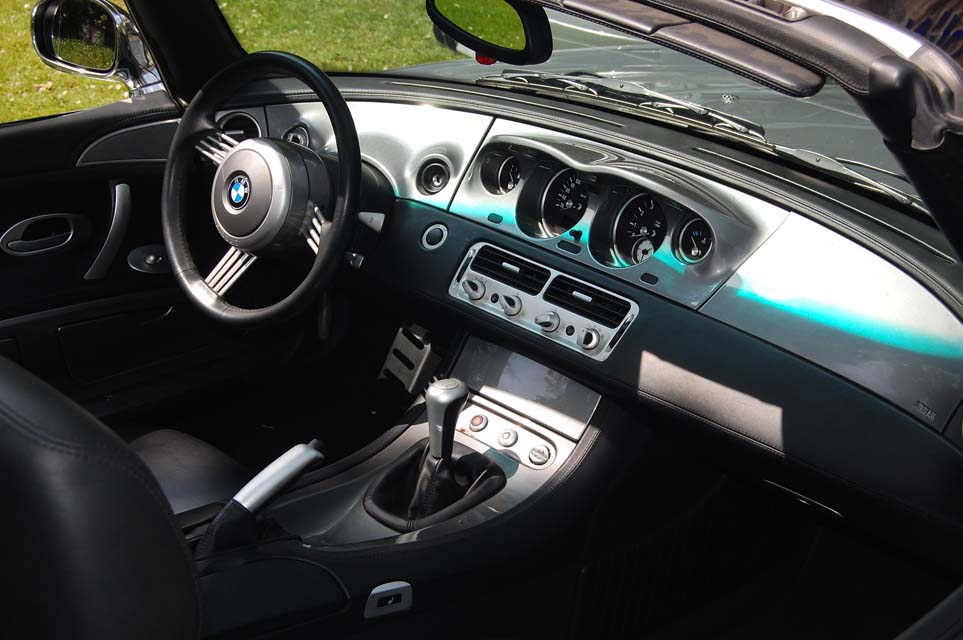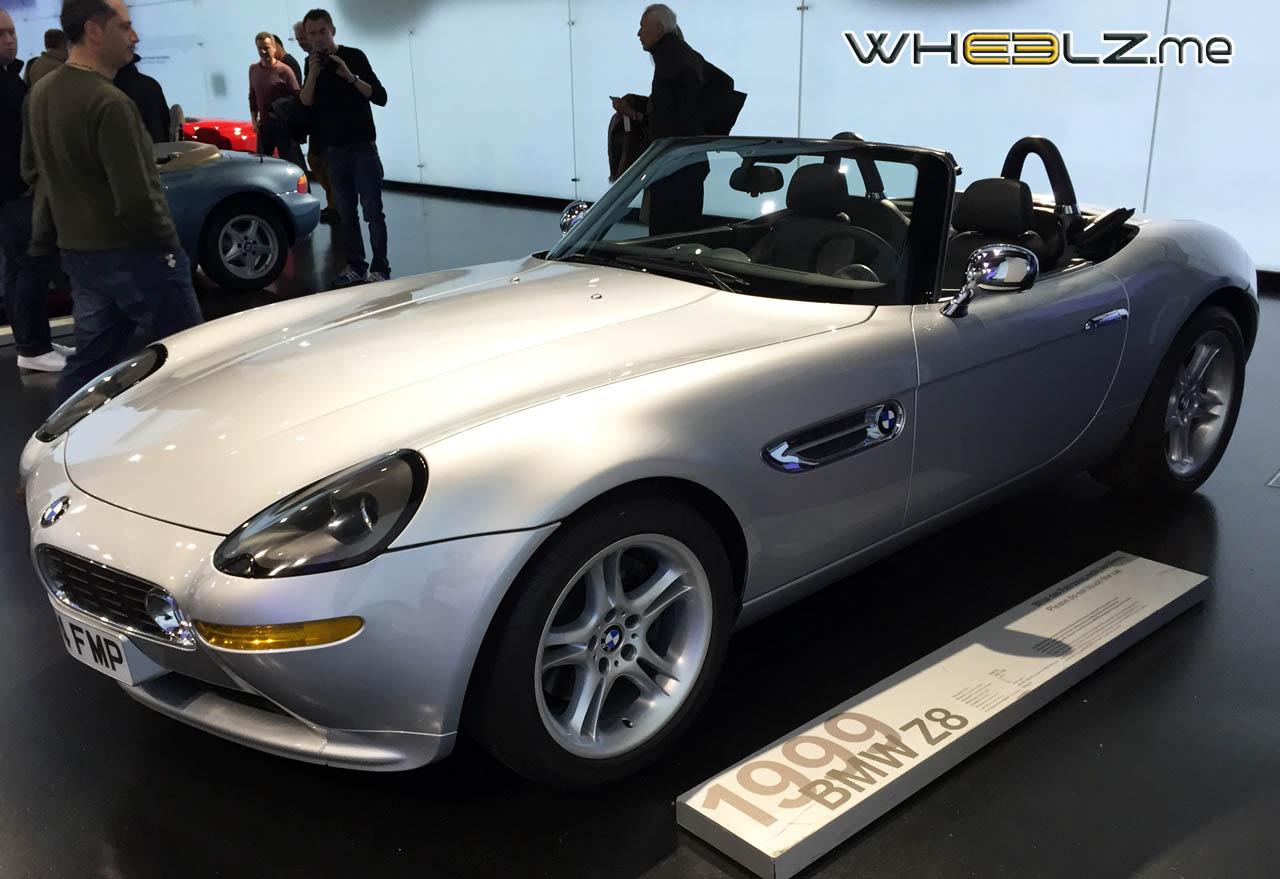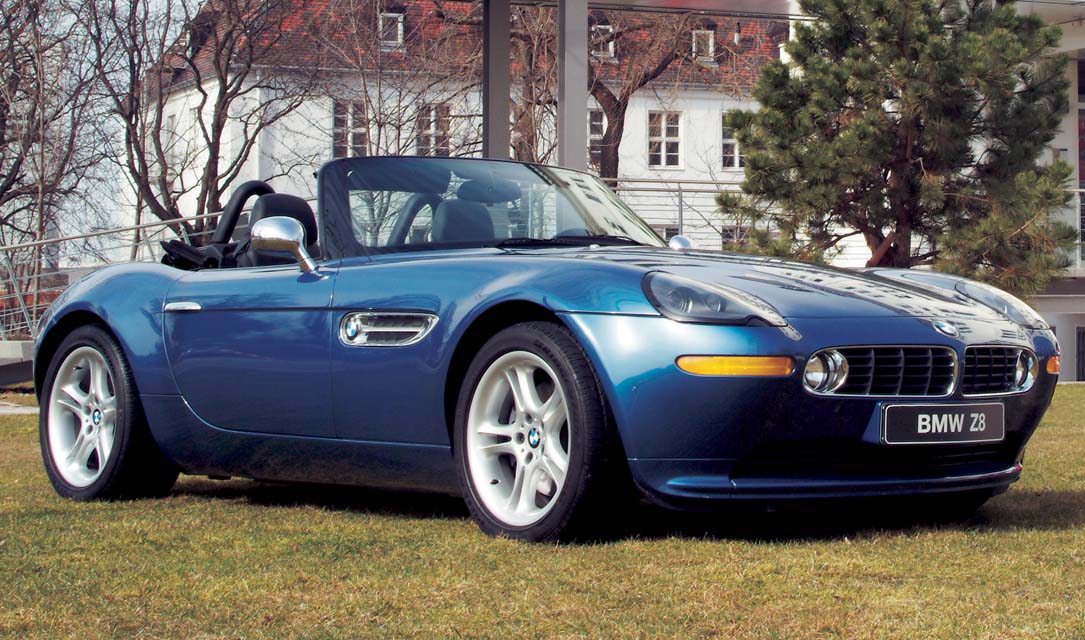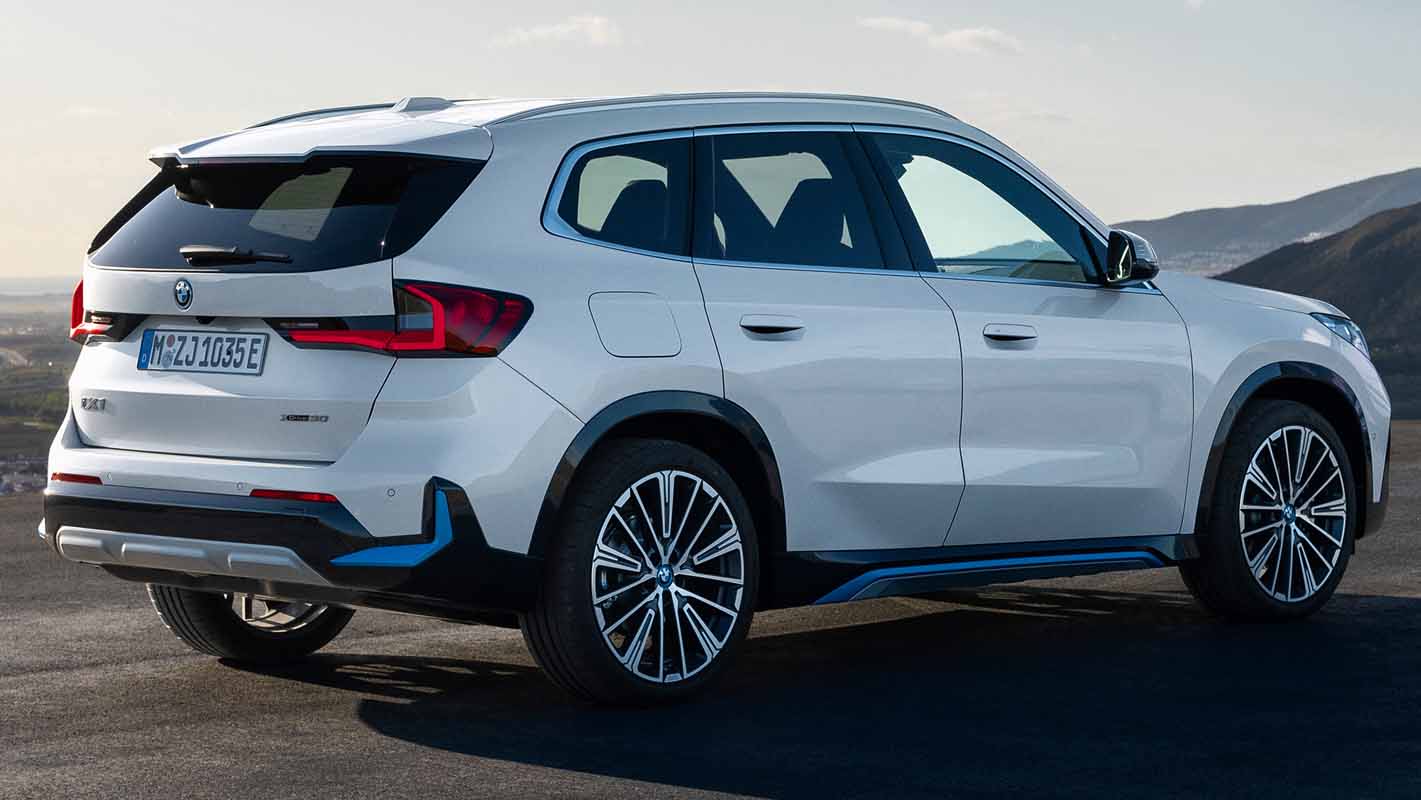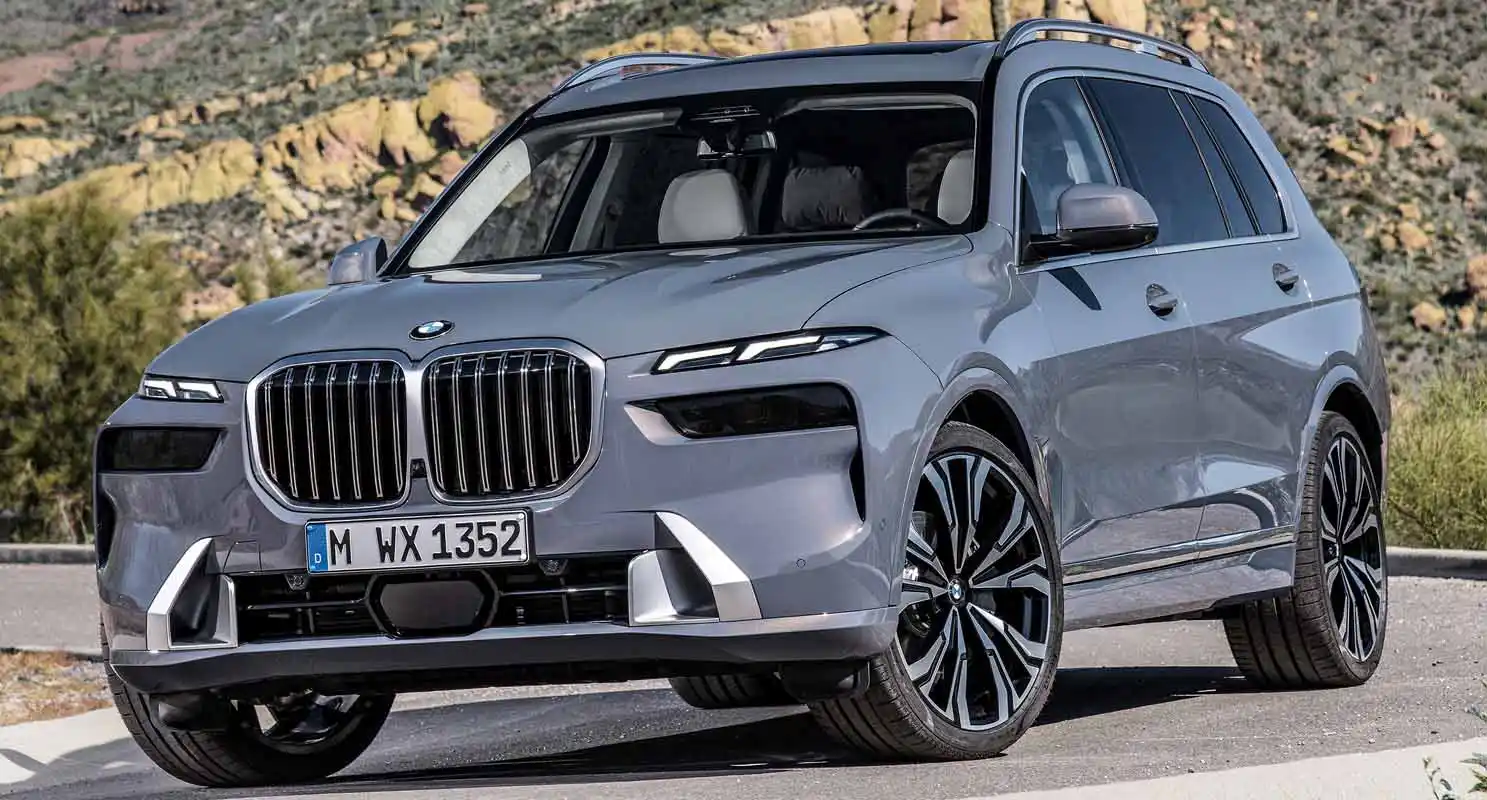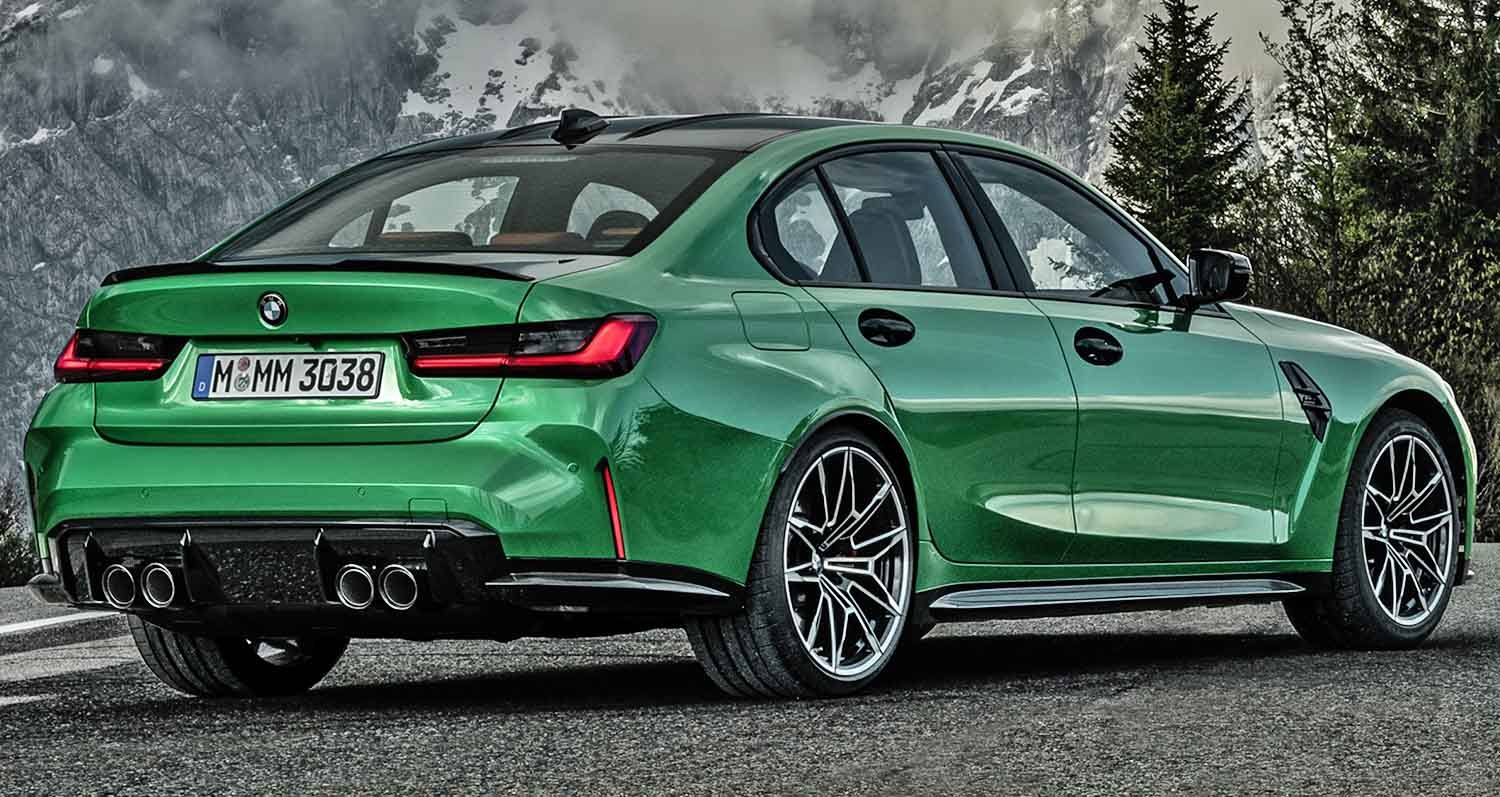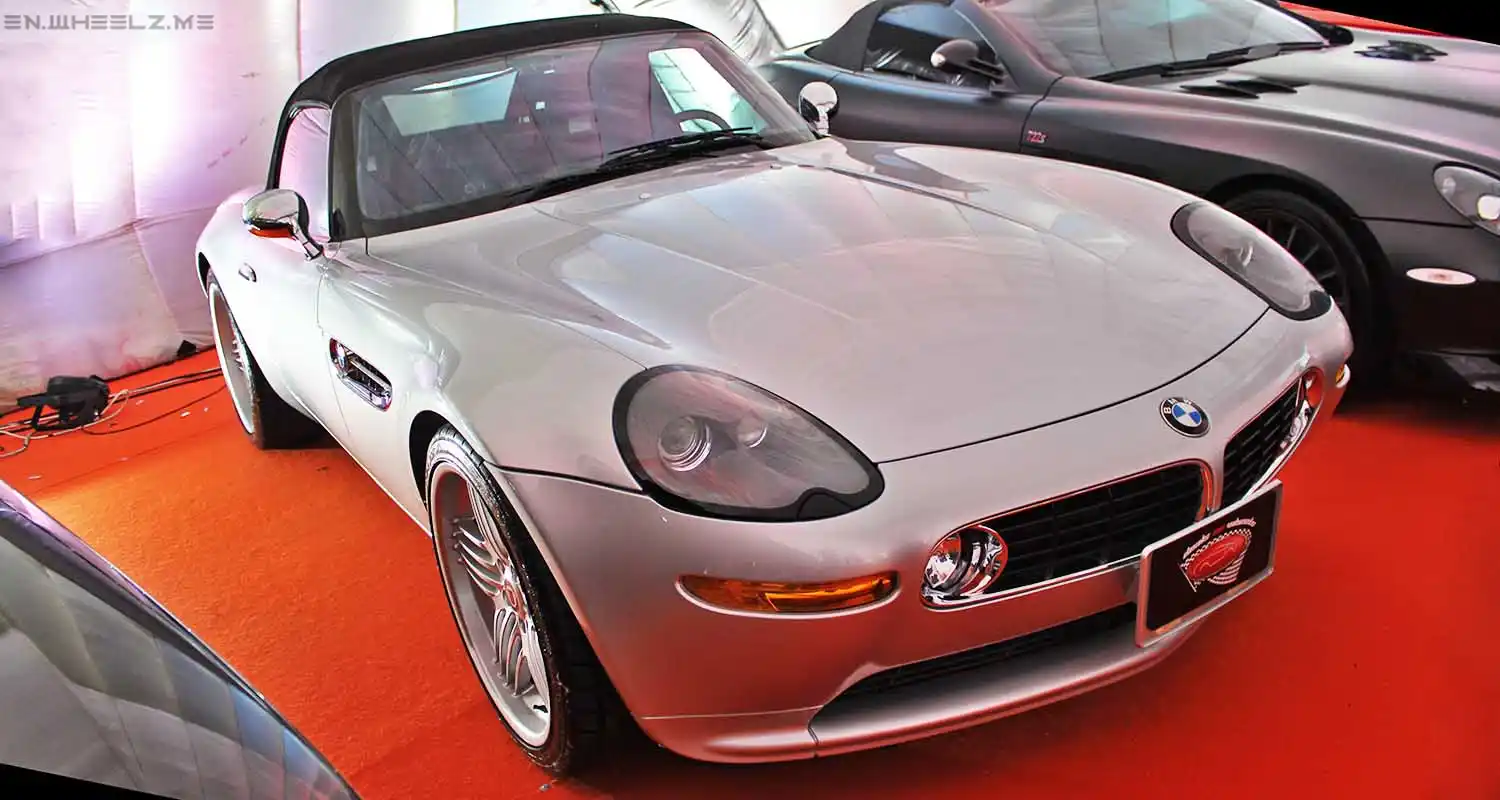
Throughout its history, BMW has designed and produced limited-production automobiles that are quintessential expressions of the passion for driving that is the company’s soul. The legendary 328 roadster made its 1937 debut as a race car at Germany’s famous Nürburgring. The spectacular 507 roadster, built during 1956-59 in only 253 examples, is considered by many enthusiasts and collectors to be one of the most beautiful cars ever built. A sensation on the road and on the race track, the mid-engine M1 coupe, built in 1980-1982, newly defined the term “exotic car.” And in 1987, prompted by an enthusiastic public response to spy photos of a car built primarily as an engineering concept project, BMW unveiled the Z1 roadster as a production model. (This lovely fiberglass-bodied 2-seater with electric doors was never officially imported into the U.S.)
The Z8 roadster, introduced at the 1999 Frankfurt Auto Show, is a continuation of this tradition. In developing the Z8, BMW designers were challenged to imagine what the original 507 would be like if it had never ceased production and had evolved over four decades. The result of this creative direction is a thoroughly contemporary interpretation of that famous and coveted roadster – a car that is truly a perfect blend of performance and sensuality; of modern technology and classic elegance.
Largely hand-built in Germany, the Z8 is produced in very small quantities. Production of the original model will cease at the end of November ’02; a new version enters production immediately thereafter. The base price for 2003 is $132,195 including destination charge and a Z8 Driving Experience at BMW’s Performance Center Driving School in Spartanburg, South Carolina.
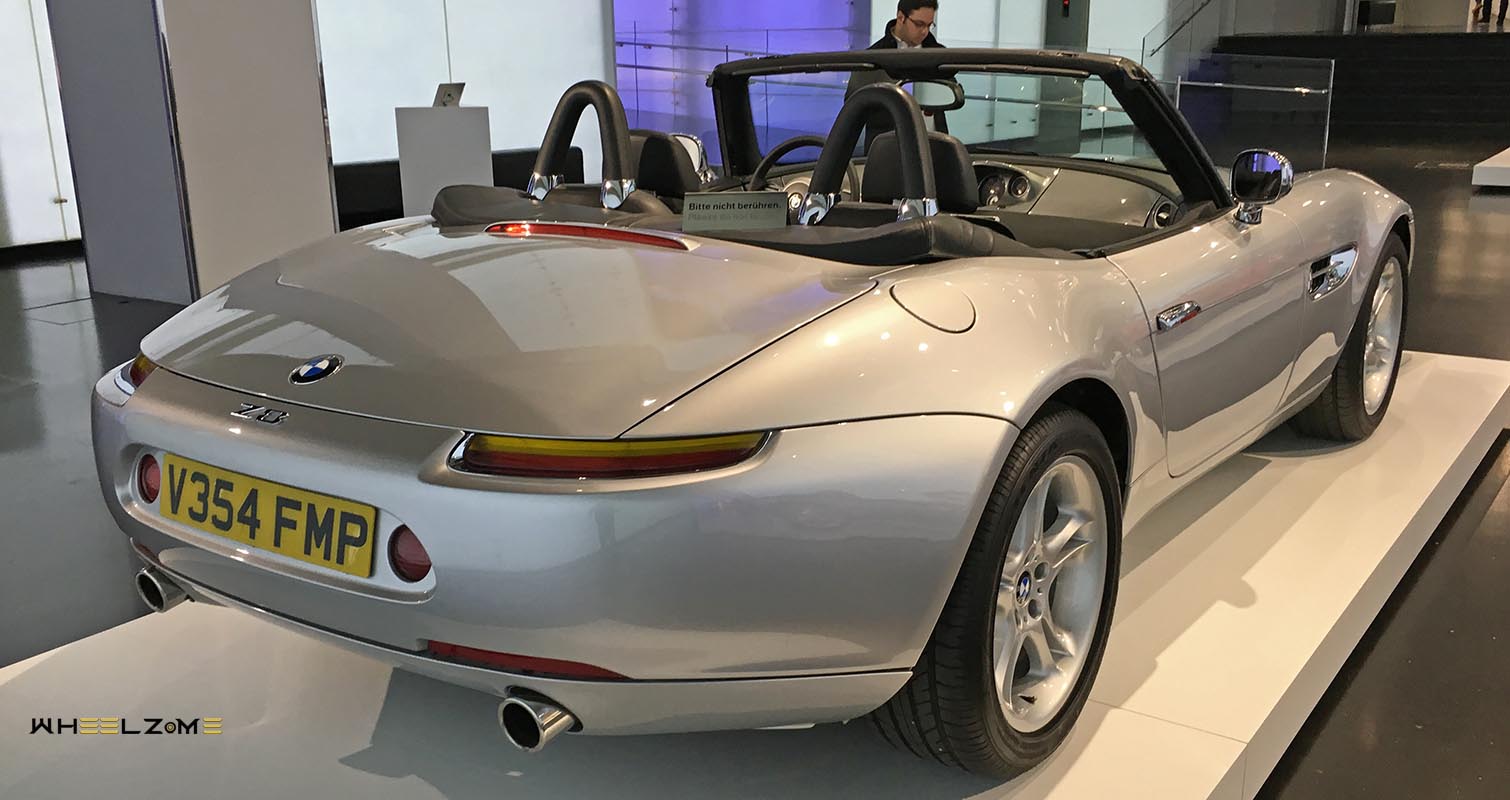
Z8 design: taking cues from the past, setting trends for the future
The world’s first look at the Z8 concept was the Z07 design study displayed at the 1997 Tokyo Auto Show and shortly thereafter at the 1998 North American International Auto Show in Detroit. Again encouraged by favorable public reaction, BMW decided to build the Z8 in limited numbers.
BMW 507 designer Count Albrecht Goertz has paid the Z8 the ultimate compliment: “If I were to design the 507 today, it would look like the Z8.” Vastly different from the esthetic of current exclusive high-performance cars, the front-engine, rear-wheel-drive sports car features a long hood, tapered overhangs, a cockpit positioned toward the rear, and a low beltline. The front-fender air vents or “gills,” here incorporating fiber-optic turn-signal indicators, are a design element usually associated with the classic 507 even though the concept dates from even earlier BMWs. In a world of sharp-edged, angular sports cars, the Z8 is romantically curvaceous.
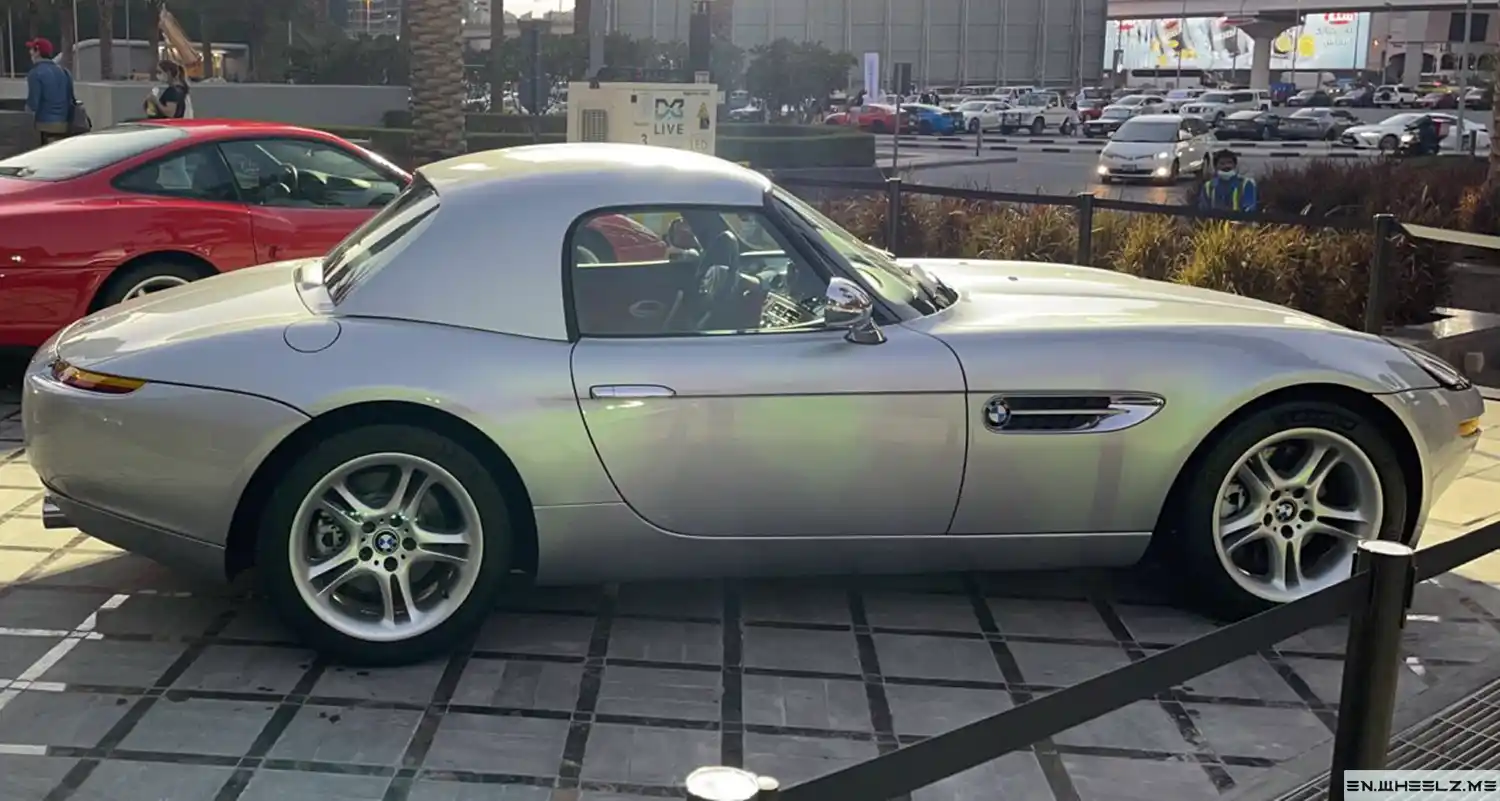
“All these features from the bible of sports car design, though entirely reinterpreted, contribute to the appearance of the Z8,” said Chris Bangle, who heads BMW Design. “And of course, the wide, squat kidney grille in the front was first seen on the 507. It gives the new sports car that distinctive look that says, ‘This is a BMW – the legend lives on!’
“Just looking at those beautiful, classic lines, I get the feeling of romantic passion,“ said Bangle. “This body, built in BMW’s high-end technology using the most sophisticated aluminum space frame, represents the ultimate standard of fascinating motoring: A classic roadster – and the Z8 is indeed a classic roadster in every respect – simply has to have a long engine bay, body lines swinging down at the sides from door level, a sexy ‘derriere’ and big wheels.”
Yet the Z8 is also thoroughly contemporary. Its long, flowing hood allows an engine position well back in the chassis to make it a so-called “front mid-engine” design. Aluminum construction is used extensively throughout, including the space frame, much of the suspension, and all body panels with the exception of bumpers (made of impact-resistant polyurethane) and steel door hinges. Other contemporary details include 18-inch alloy wheels and low profile, run-flat performance tires.
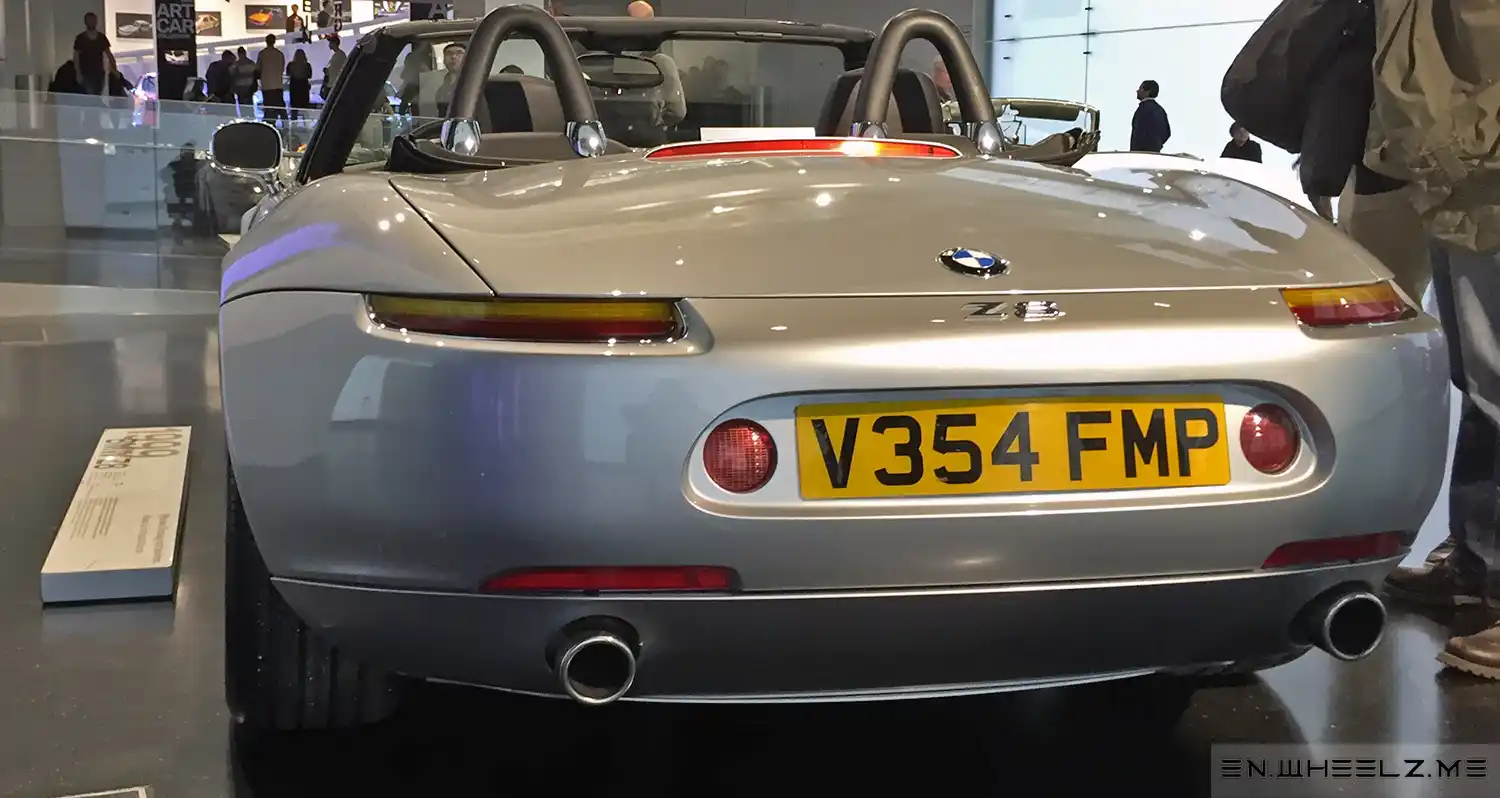
The roadster’s advanced lighting technology includes Xenon low-beam headlights with dynamic auto-leveling and, concealed in the leading edges of the headlamp covers, high-intensity washers. The Z8 was the first car ever with neon turn signals and brake lights that illuminate ten times as fast as conventional bulbs, giving other drivers more time to react.
Building the Z8 in Germany is as unique a process as is the car itself. Z8 bodies are constructed and painted at BMW’s Dingolfing plant, approximately 60 miles northeast of Munich; the front and rear bumpers are manufactured at the nearby Landshut facility. Completed bodies are then shipped to a dedicated area of the company’s Munich factory for final assembly. There, a small team of highly skilled craftspeople largely hand-build Z8s in 31 assembly steps. The complete construction and finishing process takes about 10 times as long as that for a 3 Series sedan.
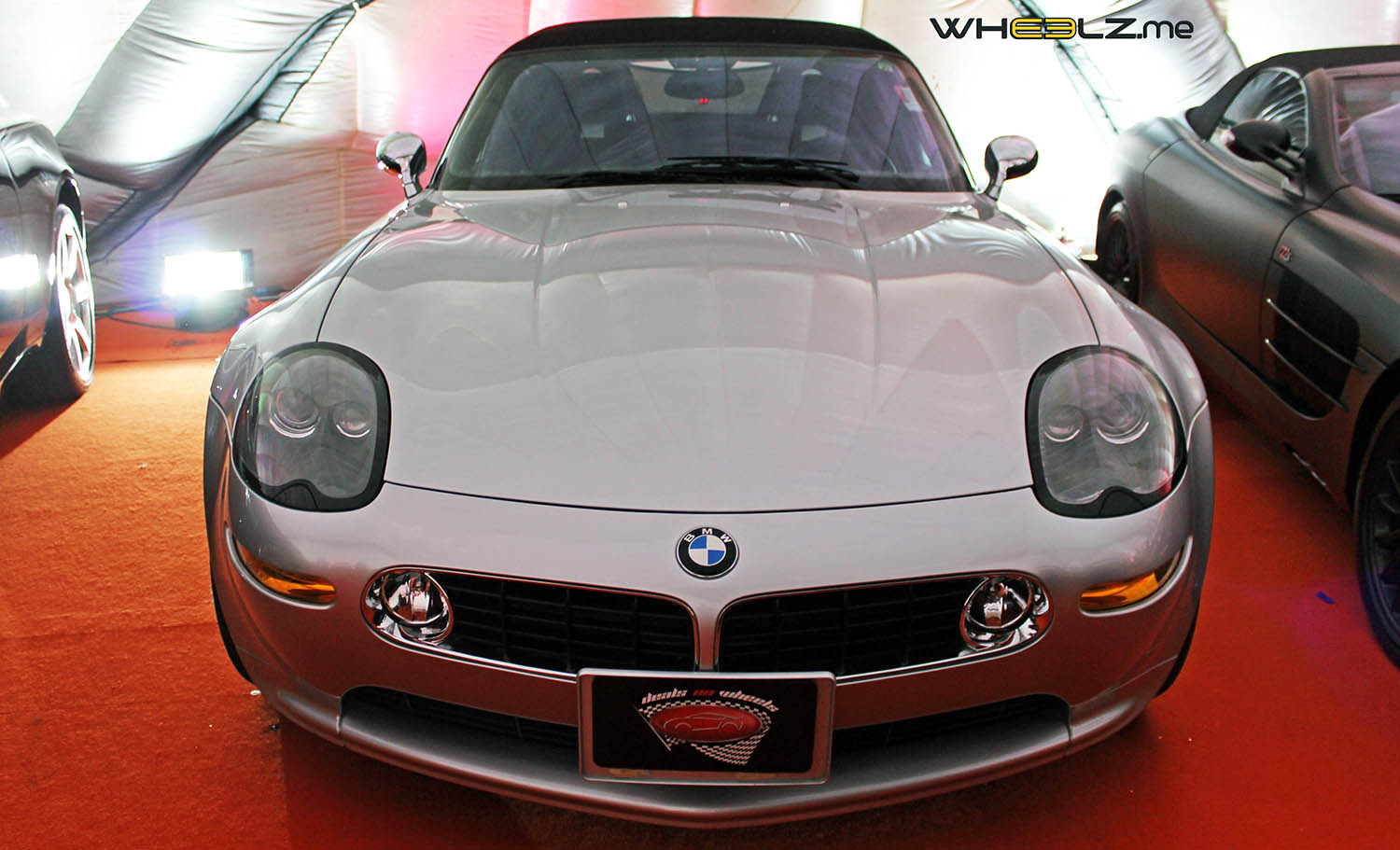
Z8 cockpit: elegantly simple, boldly advanced
The Z8 cockpit continues the theme of a modern re-creation of the 507. Though simple of design, it is fitted out with the latest in advanced, driver-friendly technology. Among its most prominent features is a unique central instrument cluster, easy to read and pleasing to look at; striking use of materials and colors; and a “banjo”-spoke steering wheel. The wheel’s wire spokes are a touch from the golden age of sports cars, yet its color-keyed horn button conceals a thoroughly contemporary 2-stage “smart” airbag.
“We deliberately put the instruments right in the middle, enabling the driver to look straight ahead without being distracted in any way,” Bangle explained. “Driving the Z8 is like sitting on a motorcycle – you just have the road ahead of you, enjoying a purist view really unique, particularly at night. It’s like flying a small sports plane.”
Bangle is firmly convinced that customers opting for this kind of car, enjoying the unique combination of avant-garde and sporting performance, want to enter a cockpit that is free of technology overkill.
Thus in the tradition of great sports cars, the Z8 has a pushbutton starter for its engine. Yet even this nostalgic device incorporates a 21st-century feature: The driver needs only to press the button briefly; the engine management system does the rest. “Pressing that black button with your thumb, you literally feel the power of the engine – it’s a very emotional thing,” said Bangle. What was the logic behind the starter button? None, really. It just seemed right.
The ignition switch is mounted on the dash, above the starter button instead of in the traditional steering-column location. An electronic steering lock, along with BMW’s Coded Driveaway Protection, helps deter theft.
A flip-up panel beneath the climate controls conceals a Multi Information Radio unit, which includes a GPS navigation system; an audiophile-quality Harmon-Kardon AM/FM/CD audio system; and an ambient-temperature display. Among the audio system’s 12 speakers are woofers in the footwells; tweeters and woofers in the doors; wide-band speakers as well as four amplifiers beneath the seats; and subwoofers behind the seats. A 6-disc CD changer is in a lockable compartment behind the driver’s seat. This audio system provides the power for a stirring, emotional sound and appropriate bass effect for an open-air automobile. Of course, there are always the melodious sounds of the Z8’s magnificent V-8 engine for auditory entertainment as well.
A digital, hands-free phone is standard; it includes the “Mayday” function that, in conjunction with the GPS navigation, pinpoints the car’s exact location and summons help with the push of a button. To keep the exterior design clean, the antennas for these systems are hidden in the rear bumper.
In keeping with the sleek, clean cockpit design there is only one window switch on the driver’s door along with the control for the exterior mirrors. By moving the slide control for the mirror, the driver can operate either side window or both together.
Other standard equipment includes heated leather seats, a power roadster top, and a removable aluminum hardtop with heated rear window.
The extensive Nappa leather upholstery and trim are accented with body-color painted surfaces and aluminum control knobs, all connoting astounding attention to detail. Interior trim consists of aluminum and color-keyed painted surfaces.
The Z8 is completely equipped to meet the most discerning drivers’ standards. Its only options are the color choices for exterior, interior, and softtop. By the way, the Z8’s trunk will accommodate enough luggage for a weekend getaway or two golf bags.
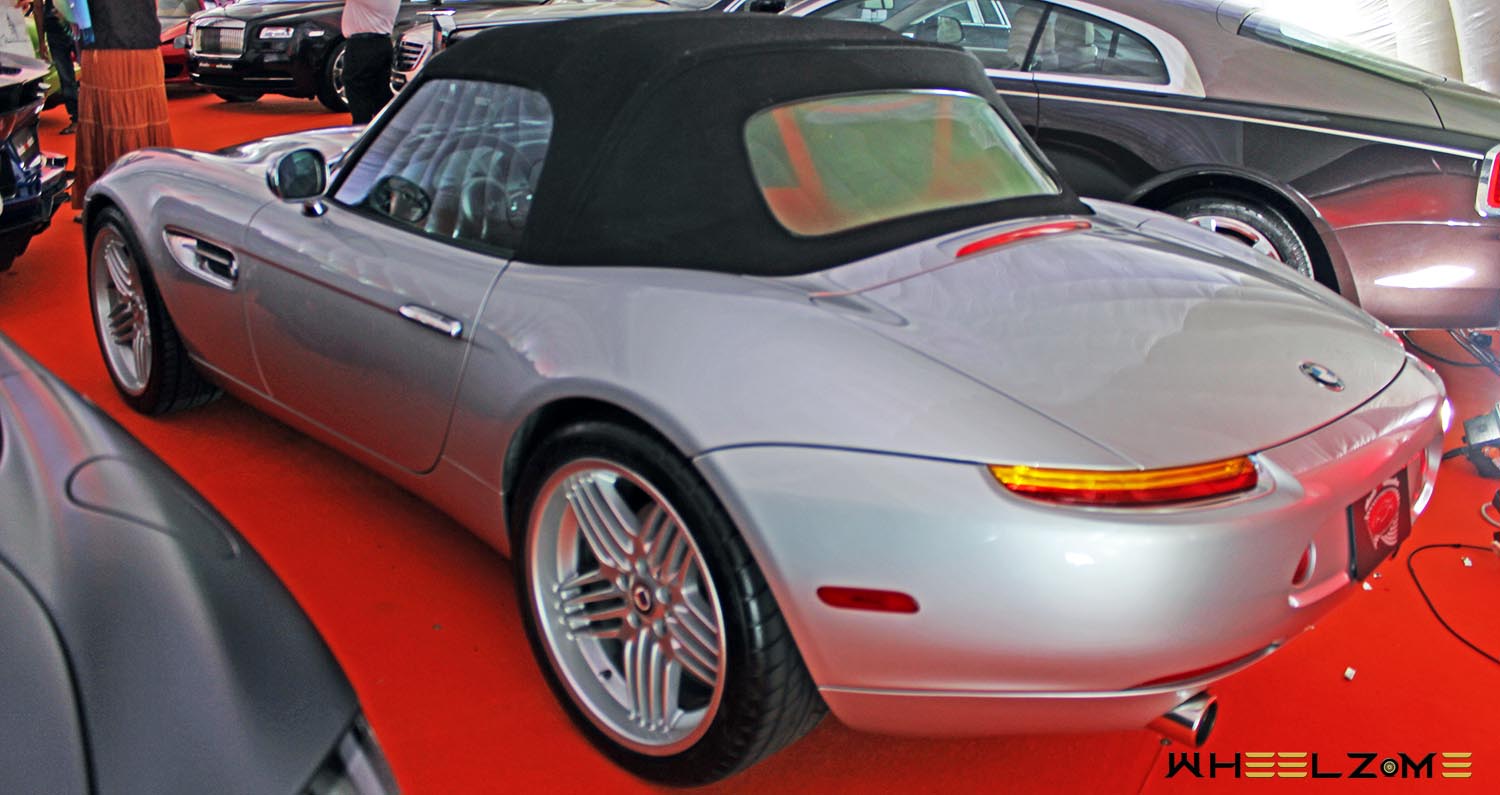
M Power under that long hood
The 3.2-liter aluminum V8 that powered the original 507 was, at the time, BMW’s most powerful engine. For a car that personifies BMW’s passion for driving, BMW’s currently most powerful engine was chosen. Delivering 394 horsepower and 368 lb-ft. of torque, the Z8’s aluminum engine is completely civilized in traffic and around town, thanks in part to its infinitely adjustable, electronically controlled valve-timing system. Called High-Pressure Double VANOS [1], the system varies valve timing on the intake and exhaust valves of both cylinder heads – thus on all four camshafts – helping optimize power, torque and emission control. “High-pressure” signifies the fact that this engine, as in other BMW M engines but distinct from regular-production BMW units, has a dedicated oil pump for the VANOS system.
The engine’s “drive-by-wire” throttle system operates eight individual intake throttles and includes the M Dynamic Driving Control, which allows the driver to select between Normal and quicker Sport response characteristics.
A unique g-sensitive engine-lubrication system ensures proper oil circulation in hard cornering situations. A V-8 engine’s cylinder heads are canted at a 45˚ angle; to ensure adequate oil flow out of the heads under extreme cornering loads there are two scavenging pumps, one for each cylinder bank. In straight-ahead driving, these pumps pick up oil from the rear of the engine and return it to the sump. In hard cornering (0.9g or more), the Dynamic Stability Control system’s lateral-g sensor switches magnetic valves to pickup points at the curve-outer side of each head and the pan.
The most visible component of the engine compartment, the carbon-fiber air-collector cover, bears the famous script “BMW M Power.” The engine compartment itself is finished in the same high-gloss paintwork as the roadster’s exterior.
A Getrag 6-speed manual transmission with specially reinforced clutch, also from the M5, is mated to the Z8’s engine. The net result of all this industry-leading high-performance technology is an elegant sports car that will sprint from a standstill to 60 miles-per-hour in a soul-stirring 4.7 seconds while producing engine sounds and an exhaust note that car enthusiasts have called a “mechanical symphony.” To enhance that symphony, engineers deliberately matched the exhaust note to engine load. While cruising, it is a deep rumble. When the driver “pushes” the engine, the sound mounts to a thrilling crescendo, all the while complying with international sound standards.
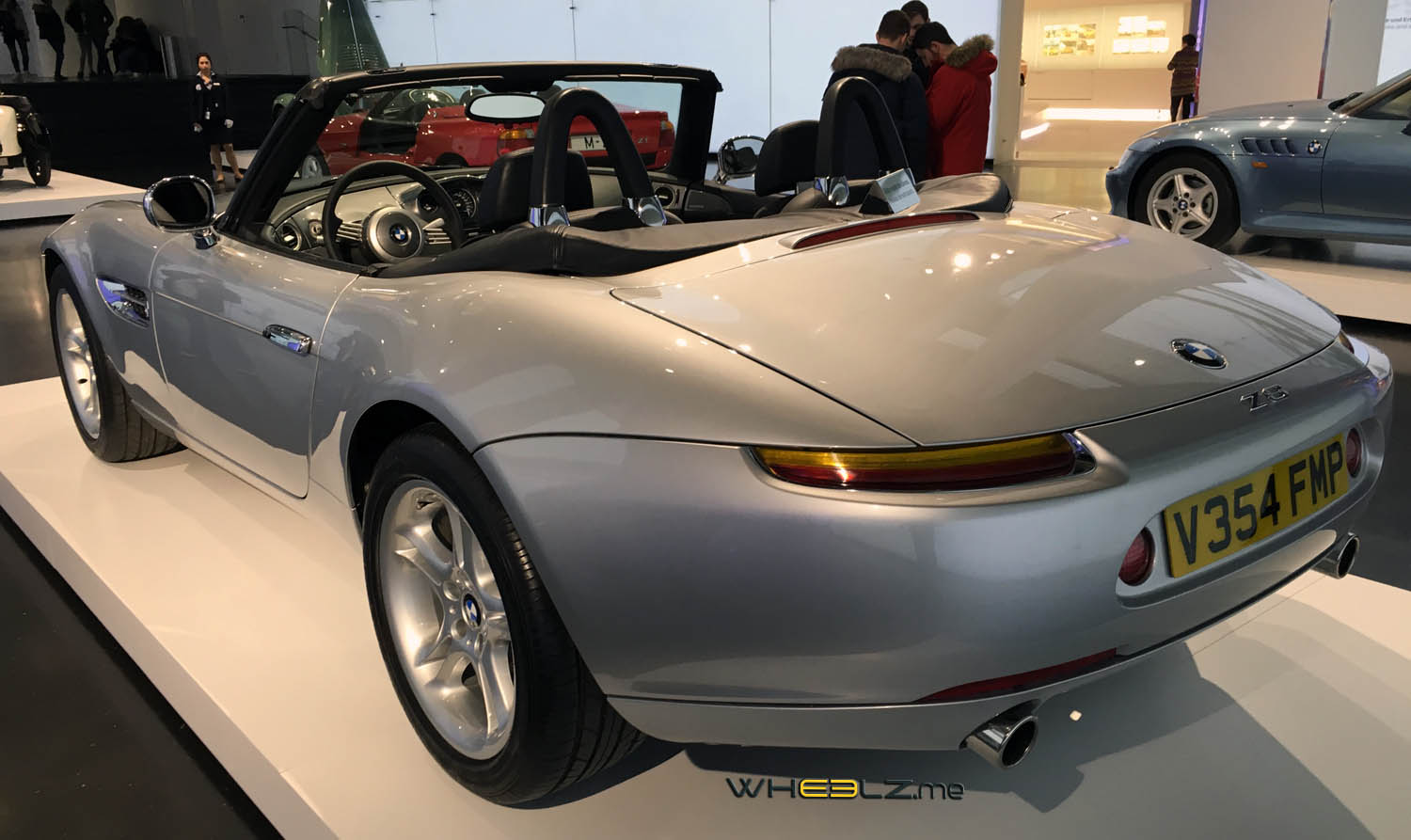
Aluminum body and space frame: linking tradition with contemporary standards
The original 507’s body was aluminum. Taking up that tradition in a 21st-century form, all the Z8’s body panels, except its bumpers and door hinges, are aluminum. Here BMW has taken the use of this lightweight alloy a step further and designed an entire space frame in aluminum. This concept combines moderate weight with body rigidity that is unparalleled by any other open sports car in this category.
The monocoque frame is made of extrusion-pressed beams much like the trusses of a timber house. Nearly 1,000 rivets and 190 ft. of fused welding seam (MIG) hold the frame and body panels together. The frame is made largely in-house at BMW’s Dingolfing plant, where the existing aluminum processing center also makes the 3 Series convertible hardtop, M3 hood, and 7 Series hood and front fenders.
The space frame, which is 30 percent lighter than if it were made of steel, provides exceptional torsional rigidity to eliminate most of the body or “cowl” shake usually associated with an open-top car: “The chassis is rigid enough,” commented Car and Driver in April 2001, “to harness [the engine’s] thrust without any creaks or groans.” This also provides an extremely stable platform for precise suspension tuning, and contributes to excellent driver feedback. The central frame’s stiffness also allows much lower side sills than is normally the case for a roadster.
Pairs of unique aluminum “Y” arms that connect the Z8’s front and rear sections to its space frame provide much of the torsional rigidity and accident protection. In a crash, the arms are designed to crumple, absorbing energy and transferring forces to the sturdy center floor pan.
In simulations of the European Union’s rigorous 40-mph offset crash test, the Z8’s passenger cell remained completely intact. “Smart” 2-stage airbags, safety belts with force limiters and automatic tensioners, twin Rollover Protection hoops behind the seats, and a reinforced windshield frame round out the Z8’s comprehensive range of occupant protection.
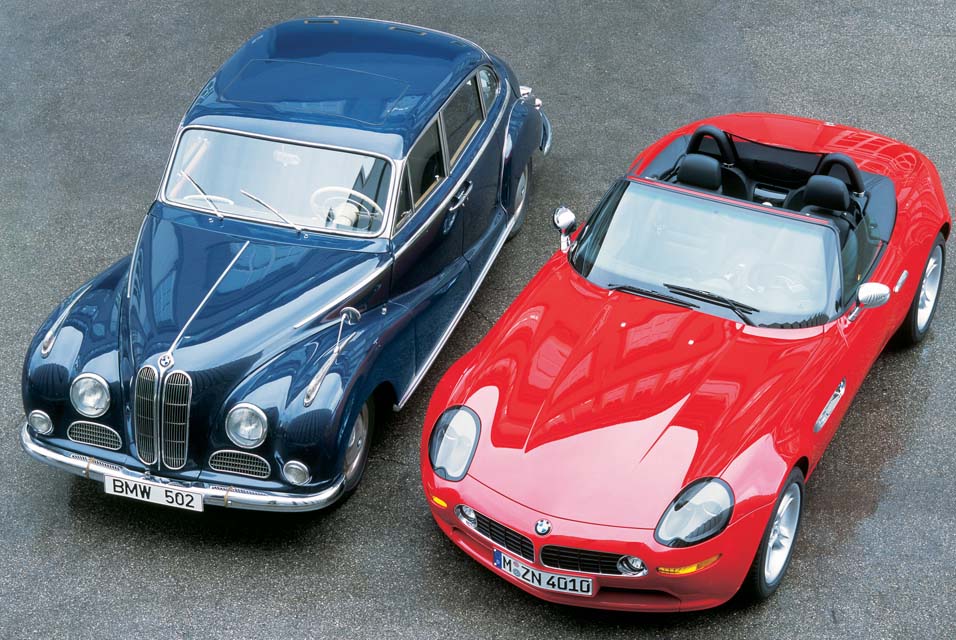
Dynamic Stability Control: 21st- century active safety for a classic sports car
The Z8’s impressive technology also includes Dynamic Stability Control (DSC), one of the most advanced vehicle control systems in the industry. Scenarios where DSC could help “save the day” include those where the driver might have misjudged a traffic situation; failed to match speed to road conditions; had a lapse of attention; or been confronted with an unavoidable or critical traffic or road situation.
With wheel-speed sensors and a powerful microprocessor at its heart, DSC incorporates a range of functions that facilitate full and effective use of the Z8’s immense performance and handing capabilities with an added measure of safety. It incorporates all-speed traction control; electronic brake proportioning for always-optimum distribution of brake force among the four wheels; antilock braking; Dynamic Brake Control, which assists the driver in obtaining the shortest stopping distance in an emergency; and enhancement of vehicle stability during hard cornering, braking and avoidance maneuvers.
In this last function, figuratively speaking, DCS could be described as a “giant hand” gently exerting its influence on a car to help stabilize it when the driver’s abilities or actions might not be able to do so. Literally, of course, this is not what happens; but DSC employs the sophisticated technology of sensors, computing power and actuating systems to achieve stabilizing effects that can be likened to such a “hand.”
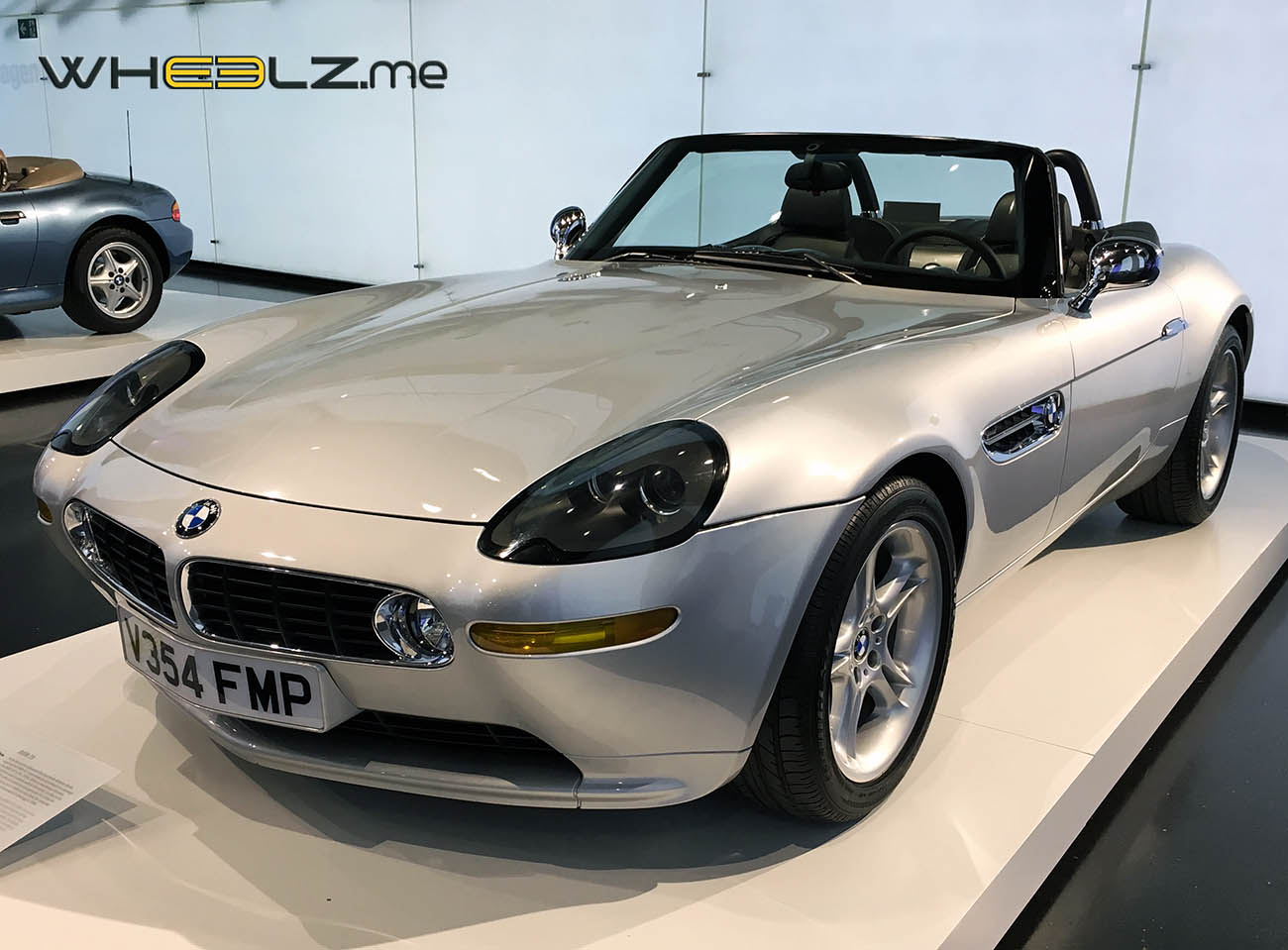
Run-flat tires: another pioneering Z8 technology
With the Z8, BMW was the first European carmaker to offer run-flat tires as standard equipment on a high-performance car. Called RFC, for Run-Flat Combination, the technology consists of self-supporting tires, special “hump” wheel rims, and a Flat Tire Monitor system.
The tires themselves have reinforced sidewalls, with special inserts and rubber compounds that are extremely heat-resistant. These allow even a defective tire without air pressure to largely maintain its shape and driving and handling characteristics up to about 90 miles. The specially designed Extended Hump wheel helps keep a damaged tire positioned on the wheel. Even with a flat tire, the Z8 retains full Dynamic Stability Control functionality.
Speaking of DSC, the system plays a key role in the Flat Tire Monitor component of the run-flat technology. Whenever tire pressure drops by as much as 30%, the tire’s rolling radius changes significantly. This causes the affected wheel to turn at a different speed, which is detected by the DSC sensor at each wheel. Within one to three minutes, the system detects the loss in tire pressure and alerts the driver to the condition through an audible signal and an instrument-panel indicator.
Of course the driver must then proceed carefully, not exceeding 50 mph, but it is not necessary to stop and change the tire until reaching the next tire dealer or BMW Center.

A delivery experience befitting: an automobile of such distinction
Ordering and taking delivery of a car as exclusive as the Z8 should be a memorable experience; BMW has taken steps to ensure that it is just that. Owners awaiting delivery of their roadster are offered a high-quality scale model of the Z8. A handmade book is presented to the owner of each Z8 upon delivery, including photographs of his or her car in production and actual paint and upholstery samples from the car. Z8 owners are offered the opportunity to take delivery of their roadster at BMW headquarters in Munich, Germany, where they may even watch the final assembly of their roadster. Munich delivery also includes a tour of the Z8 assembly area, and a choice of optional European tours is offered. Alternatively, delivery is also possible at the BMW Performance Center at Spartanburg, South Carolina.
The purchase of a Z8 includes a special driving course at the BMW Performance Center in Spartanburg, South Carolina, called the Z8 Driving Experience.
Maintenance included, now for a full four years
Like all 2003 BMW models, the Z8 comes standard with BMW’s 4-year/50,000-mile Limited Warranty, Roadside Assistance for the same period, and BMW’s Full Maintenance Program – newly upgraded to for 4 years or 50,000 miles. This reassuring package of product backing and customer service makes every BMW model even more appealing from a cost standpoint than its value-oriented base price would indicate.
BMW Assist: expanded services for ’03
Through model year 2002, BMW Assist services were available to BMW customers using vehicles equipped with GPS Navigation and BMW Cellular Phone System, both standard in the Z8. Customers received BMW Assist services for 3 years from the original vehicle in-service date, and paid the airtime charges via their own service provider.
For 2003, BMW enhances this program with the addition of Concierge Services, and includes the initial year of BMW Assist services. The BMW Assist services include:
Automatic collision notification. In the event of airbag deployment, the in-vehicle hardware will automatically transmit the location and relevant information to the BMW Assist Response Center. A qualified representative will try to contact the driver, and will coordinate dispatch of police, fire and/or medical emergency services to the location, even if unable to communicate with the driver.
Emergency service. Vehicle occupants may also request police, fire and/or emergency medical services by pressing the EMERGENCY soft button on the Multi Information Radio monitor. The hardware will then transmit the location and relevant vehicle information to the Response Center; a qualified representative will contact the occupants, coordinate dispatch, notify any emergency contacts on file, and link BMW Roadside Assistance as needed and requested.
Roadside Assistance. If the driver needs assistance (events such as flat tire, out of fuel, etc.), he or she may activate the ASSIST soft button on the monitor. The hardware will transmit the location and relevant vehicle information to the Response Center; a qualified representative will coordinate dispatch of assistance to the vehicle location.
New for 2003: Concierge Services. Around the clock, BMW users can now call upon BMW for just about anything on their personal or business task list. From travel planning/trip routing to dining reservations, errand running to household services, shopping assistance and event tickets – one call to a toll-free number from any phone gets BMW owners help when they need it.
After the initial year’s BMW Assist services, the annual fee will be $199. This is a change from the previous offering, for which owner fees did not begin until the 4th year but which did not include the Concierge Services.
Performance with a conscience
BMW strives to produce its motor vehicles and other products with the utmost attention to environmental compatibility and protection. Integrated into the design and development of BMW automobiles are such criteria as resource efficiency and emission control in production; environmentally responsible selection of materials; recyclability during production and within the vehicle; elimination of CFCs and hazardous materials in production; and continuing research into environmentally friendly automotive power sources. Tangible results of these efforts include the recycling of bumper cladding into other vehicle components; water-based paint color coats and powder clear coats; and various design and engineering elements that help make BMWs easier to dismantle at the end of their service life.
BMW Group In America
BMW of North America has been present in the United States since 1975. Since then, the BMW Group in the United States has grown to include marketing, sales and financial service organizations for the BMW and MINI brands; a South Carolina manufacturing operation; DESIGNWORKS/USA, an industrial design firm in California; a technology office in Silicon Valley and various other operations throughout the country. The BMW Group is represented in the U.S. through networks of 340 BMW car, 327 BMW Sports Activity Vehicle, 148 BMW Motorcycle retailers and 69 MINI car dealers. BMW US Holding Corp., the Group’s headquarters for North, Central and South America, is located in Woodcliff Lake, New Jersey.
[1] – VANOS = VAriable NOckenwellen Steuerung = variable camshaft control, or variable valve timing.

